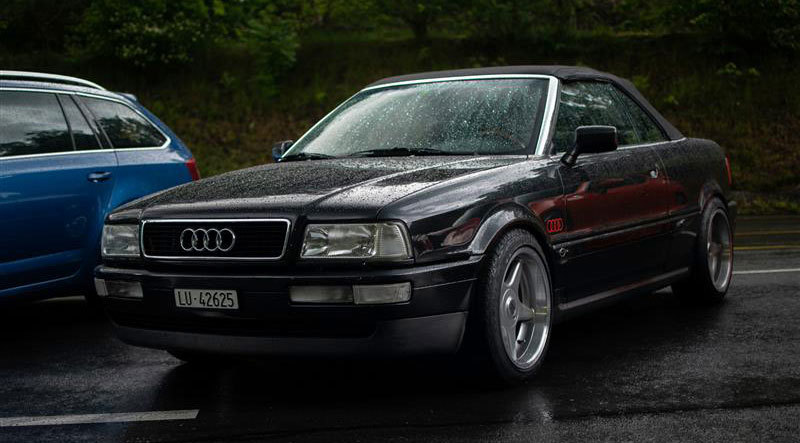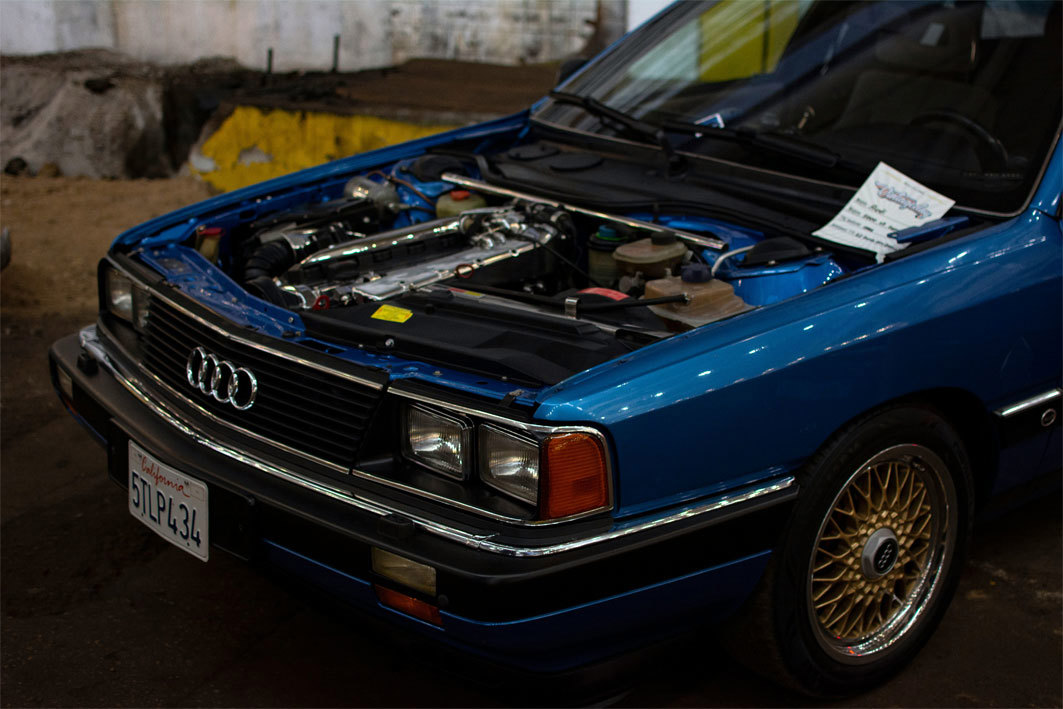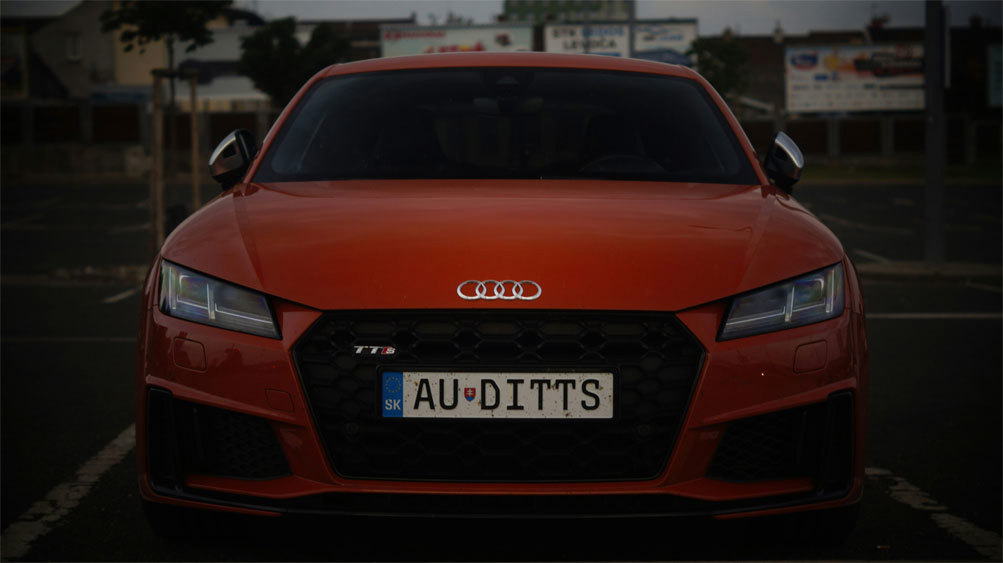29 September 2025
Audi through the ages
8 minutes
While the longer history of German automobile manufacturer Audi (which is quite literally Latin for “listen” – translating the name of the founder’s name, Horch) has its origins story firmly planted from the very beginning of the 20th Century, we’re going to switch gear to a slightly more recent time for the tech and innovation motoring giant.
As 2025 marks forty years since rebranding as Audi AG, and sixty years since the famous Frankfurt IAA Motor Show where Audi re-emerged as a car brand to be reckoned with following a post-war quiet period, we’re taking you on a turbo-charged journey and aiming the headlights at the vehicle highlights across the decades. So whether you’re nostalgic for ‘Fire up the Audi Quattro’ or still wistful for the innovative Audi era of “Vorsprung durch Technik”, there’s plenty to look back in wonder with here.
Four rings, big symbols
Before we leave the starting blocks, a few lines on the origins of that unmistakable Audi logo and symbol – the four rings. The interlocking circles, first seen in 1932, represent the joining of forces between Audi, DKW, Horch and Wanderer Werke into what was then commonly called the Auto Union AG. The backstory is that the interlocking represents unity to create quality, luxury motors. However, back in this age, the rings were only ever used for racing car models. But it’s not all corporate yawns… each of the brand circles is supposed to represent specific, circular vehicle segments, such as the steering wheel and tyres.
Quietly swinging into the Sixties
These days, you’d rarely imagine Audi doing anything quietly, but in 1965, that was exactly their approach. Twenty years on from the dark years and checkered history of World War Two that tainted the brand, the company resurfaced after a sustained period of dormancy. A sedan (more or less an update of the F102 model) marketed just as “The Audi” made a premier appearance on a show stand.
The public, press, and industry response to this was positive, and the 60, 75, 80 and Super 90 models that followed on presented a mix of two-door and four-door variations, as well as the Variant estate.
Meanwhile, behind the scenes, Mercedes-Benz – Audi’s owner at the time, offloaded the company – then known as Auto Union GmbH – on to Volkswagen. VW’s vision was to manufacture vehicles that would be a real point of difference and purchaser upgrade to their own small car superstar, the Beetle.

Powering through the Seventies
In 1968, Technical Director Ludwig Kraus got to work on imagining a car that in solid form would roll off the VW production line as the Audi 100 – also known as the rather prestige C1. Acquiring its name as a reflection of it’s power output, this larger-than-life 1.8 litre four-door saloon model with a four cylinder engine swiftly begat other variants leading into the next decade; a two-door saloon in 1969, and the 100 Coupé S in late 1970 – which amped things up a little thanks to a 1.9l capacity. Aesthetically, The 100 Coupé S, with its louvred rear-side windows was a bit of a doppelganger for the Aston Martin DBS, but this Audi proved to be in a class and lane all its own, thanks to the introduction of the 100 LS in spring 1970 that had the option of a three-speed automatic transmission.
The beginning of a decade was when Audi fixed their headlights on the North America motor scene. It was a considered move with both the Audi 80 and 100 publicised as cars that were not only streets ahead in terms of technology, but fun, practical, and most of all – affordable. And a “little matter” like the 1973 global oil crisis didn’t stop Audi’s strategy from working, as by 1974 annual US sales were leaping over the 50,000 mark.
Throughout 1970s, the Audi 100 continued to regenerate. It was also when that memorable slogan "Vorsprung durch Technik" entered the advertising lexicon – more a guiding principle than simply a catchphrase, turbocharging in 1979 and introducing the quattro four-wheel-drive in 1980.
There was also the offering of a more glamorous Coupe version until 1976 – the same year the Audi 200 was launched. Although it had the looks and lines to make it a contender, the limits of a 112-hp 1.9-liter four-cylinder engine meant it never really fulfilled its potential. In 1977 there was more reason to celebrate as both models combined hit the sales milestone of one million. By the end of the decade, everything had a little more of a rev, which meant the scene was set for one of Audi’s most iconic models.
Audi Quattro takes off like a rocket
Making its big entrance at the Geneva Motor Show in 1980, the Audi Quattro coupé came out all guns, wheels, and engines blazing – ready to conquer smooth and icy surfaces plus most other road conditions, thanks to the all-wheel drive and centre and manually lockable differentials. This gave it the right credentials as a rally contender (bang on time for a competition rule change that allowed four-wheel drives), as well as regular driving.
Thanks to its separate front and rear suspension, distinctive flared wheel arches, and turbocharged engine, it didn’t take long for the Quattro to take the lead on similar models of the era – both in terms of performance and sales.
With many aspects hand-built on a totally dedicated production line, from 1980-91 just short of 11,500 Audi Quattro models were manufactured – all with a consistent look and feel. The interior, however, was rapidly moving with the times. In 1983 a digital display replaced the analogue instrument cluster, and in the following years, further inside upgrades included full dashboard refresh, steering wheel and centre console. a new dashboard layout, new steering wheel design, new centre console configuration, and the switches around the instrument panel were also reimagined. Throughout the remaining years of the decade, the futuristic approach paired itself with pro-driver handling favourites, such as a lock pull knob that surrendered to a two-position turn knob with volt and oil temp digital readouts.
The now legendary Quattro – quite literally meaning “four” for the four-wheel drive – also badged itself in a very different way, using the lower-case format “quattro” on the car itself as a trademarked differential. Thanks to being very much a star of the time-travel show ‘Ashes to Ashes’ a couple of decades later, this fast-mover was brought back into the classic car collector’s consciousness. So before putting pedal to the metal, we’ll finish with that that classic Gene Hunt quote: ‘Fire up the Quattro, Bollyknickers.”

Nineties
For Audi, this final decade of the 20th century was driven by a need to conquer the top end of the very busy and lucrative German motor market. And while the first few years was a case of ‘stick with what works’ – updates to the Audi 80, 90, and 100 models – the pre-millennium second half was given over to the launch of the Audi A2, A3, A4, A6, and A8 – although very much NOT numeric order.
Up until around 1994 the Coupé and Cabriolet did much of the heavy lifting. Fulfilling that tried-and tested mantra, they ticked the boxes for sporty handling, precise engineering and the aesthetic had more than a touch of ‘der stil’.
The short-lived RS2 Avant, launched in 1994, fulfilled the premise of being both high-performance and entirely practical. Designed with a little bit of requested insight from Porsche, it was very much a bridging model for future cars, with less than 3000 manufactured over the course of a year. In short, it maintained all the requirements of a classic car legend.
And then came those ‘A’ cars – here’s our highlights reel
The mid-decade A4 was born to be universally loved. Available as a sedan and estate with various engine capabilities, this modern masterpiece took full advantage of Audi’s all-wheel-drive system with its popularity further boosted thanks to deft handling and solid build.
Meanwhile, the pricier and possibly classier A8 – released in 1995 – was marketed as the sleeker more luxurious model. Added vroom came courtesy of bigger engines, such as the V6, V8, and W12, while luxe touches included heated seats, precise climate control, and a Bose sound system.
In 1996, just as The Spice Girls started to win over the world with ‘girl power’, auto power announced its own ‘hero’ with the A3. The hatchback (available as both diesel and petrol) that married a stylish inside look with impressive engineering, including a Haldex all-wheel drive system, electronic stability control, and a brake-force distribution computer. By the end of the decade, the A3 had taken its rightful place as one of the best-selling premium hatchbacks of the time, while a more full-throttle variation – the S3 – joined the Audi party at the close of the decade.
Of course, we can’t close off this section without talking about the Audi TT, first introduced in 1998. As striking and sophisticated as Claudia Schiffer on the catwalk but with more curves, the unique roundness and frameless windows made the TT a true second-glance showstopper. Once inside, it was all too easy to be seduced by the leather seats and impressive sound system, but it was the performance stats and reasonable ‘bang for buck’ that really set the bar high for competitors. Available as both a both coupe and roadster and a 1.8l turbocharged inline-4, the TT was quick off the mark and remains iconic and highly collectable.

Audi in the 21st century
In this new millennium, and despite removing themselves from the US motor market, Audi continues to lead the (turbo) charge in terms of groundbreaking technology, unarguable efficiency, and a dash of good looks.
A next-gen Audi TT Coupe launched in 2007 with an all-together more ‘hench’ and muscular appearance. Features such as an updated trapezoidal grille extended its reach to other Audi models while the TT interior glow-ups meant shedding wood for metal. Other new and bold directions for this TT resulted in a car that was more performance-driven, more big-engine-focussed, and more concentrated on sharp reflexes.
Also brought to market in 2007, the Audi S5 was a clear and timely reinvention of the A4 and A5. With two doors removed to convert it to a coupe, a hard-hitting 4.2l V8 engine that can reach hit 60 mph in 4.8 seconds, it was available as a six-speed manual – making it a good option for anyone that thinks of themselves as a ‘serious driver’. The S5 soon extended beyond the coupe though, marrying in hatchbacks, saloon, and estate variations to the wider family.
It’s the A5 and S5 that have been the ongoing headline- and hitmakers over the past couple of decades. It’s a world of Audi S5 Coupes where aesthetics represent more than fillers and plumpers. Larger rims and side vents, an integrated air diffuser in the rear bumper and a quad exhaust have vastly improved the driving experience as well as creating a more eye-catching car. Designers have also managed to lighten the load by 60 kg through the use of new materials, while a recalibrated suspension has enhanced both performance and handling.
Engine-wise, what we’re currently talking about is an increased top speed of 155 mph, plus acceleration from zero to 62 in just 4.7 seconds. Further stat facts include an eight-speed automatic Tiptronic transmission and a load/cargo volume of 16.4 square feet.
Beyond the first sixty years
As we hit the quarter-century mark, Audi’s taking sustainability seriously, while remaining true to its reputation and values of twinning luxury with performance. The e-tron series reflects how the brand is embracing electric vehicles – producing cars that are still high quality but playing a part in reducing environmental impact. And while Audi is at the forefront of pushing the boundaries on innovation – including autonomous driving and AI interfaces and responsive technology, the company’s historical models remain driveable, desirable, and are likely to take pride of place in many a classic collection.
